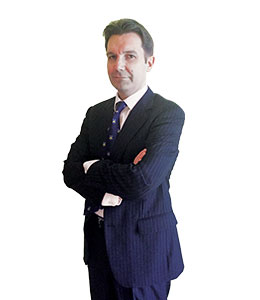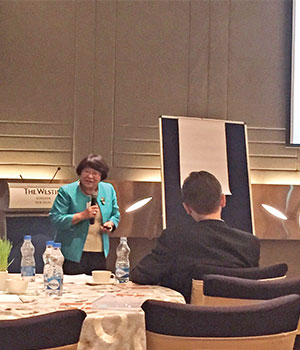
More people are dying than ever before, left high and dry, without any medical attention or medicines. They might have been alive, says John R Samuel, Managing Director “ Health Vertical, Accenture India
Globally, 1.78 deaths are reported every second, and that translates to 107 deaths per minute. If we extrapolate it to India, there are 10 deaths every minute in the country and it is estimated that half of the numbers go unregistered.

So we are looking at a stark statistic of 15 deaths every minute in India. Now, in this backdrop of mortality, if we map our expenditure on healthcare “ the situation worsens. So, although we are an economic superpower and rank as the 10th largest nation in GDP and we are in bottom five with respect to healthcare spending. Now most of the mortality in India that is close to 56 percent of deaths has been because of chronic diseases. Significant numbers of people die because quality healthcare does not reach them on time. IT can come in small packages and large systemic solutions that can help transform the healthcare sector to become more efficient and patient-friendly.

Innovations at the Cornerstone

We have seen that the vision of any public health organization globally has a common goal to improving patient care, efficiency and safety while lowering healthcare costs. There are three focus areas for us that we have set our eyes on in India to scope innovative solutions and make quality healthcare affordable for the population. First is innovations to leverage technology for patient care and elder care, second focus segment is pregnant women and children and third is eye care. Let us consider patient care especially elderly population. The most critical parameters that need continuous monitoring for most of these patients are of vital signs. Even a small dip in any of the parameters can be a cause of concern for the senior citizen patients.

We explored the digital world for a smart, portable solution and have introduced a gadget called Digital Plaster. This is a wireless device that continuously monitors vital signs and transmits the data in real time. It can provide early warning signs in case of the patient health deteriorates much in advance and save his life. It monitors temperature, pulse, heart rate, blood pressure and oxygen on its own without the need of a nurse by the bedside. The patients after discharge can connect with doctor for all vital signs monitoring by resting at home. This reduces the need for hospital visits for general check up. You can also have alerts for all parameters. This is innovation that will paradoxically change healthcare in the way we do patient care especially elderly care. This introduces the concept of vital signs monitoring as a service to patients and hospitals.
“We have created a dynamic framework under the PPP model that facilitates the partnership for benefit of patients at the end of the day”
Eye care has been our second focus area for innovation. Reflecting on statistics, 40 percent of global blindness occurs in India. This is over a period due to undiagnosed disease or faulty treatment. The eye care programmes conducted by government usually have a camp based approach. To streamline data and make this activity more efficient, innovation in data entry and data management for house-to-house surveys has shown excellent results with the handheld device. The hand held device is used for data entry and details of all the houses and patients is digitized. The output information can be then intelligently used for organizing treatment strategy as to an estimate on the number of cataract surgery required and the number of patients that can be treated just by using corrective eye glasses. So earlier if the person was doing 3 houses per day it has gone up to 5 times that number now. Digitization also helps you to remind you of the tasks that need to be done, two days before the camp or one day before the camp. Private eye care bodies are very happy to pick this area of innovation. The third area of innovation is pregnant mothers. There are 800, 55,000 anganwadi workers in the country. They used to have manually registers that we have done away with and are now fully automated for any data entry at their respective villages. Reminders again were manual now it is done automatically. We are working on from the back office in healthcare to the head office and bring in data integration and analytics for better programmes and policies that are designed towards the key problems. We have extensive experience in working on these and hope to partner with many states and introduce innovative IT platforms for robust healthcare ecosystem in India.
Be a part of Elets Collaborative Initiatives. Join Us for Upcoming Events and explore business opportunities. Like us on Facebook , connect with us on LinkedIn and follow us on Twitter , Instagram.
"Exciting news! Elets technomedia is now on WhatsApp Channels Subscribe today by clicking the link and stay updated with the latest insights!" Click here!















